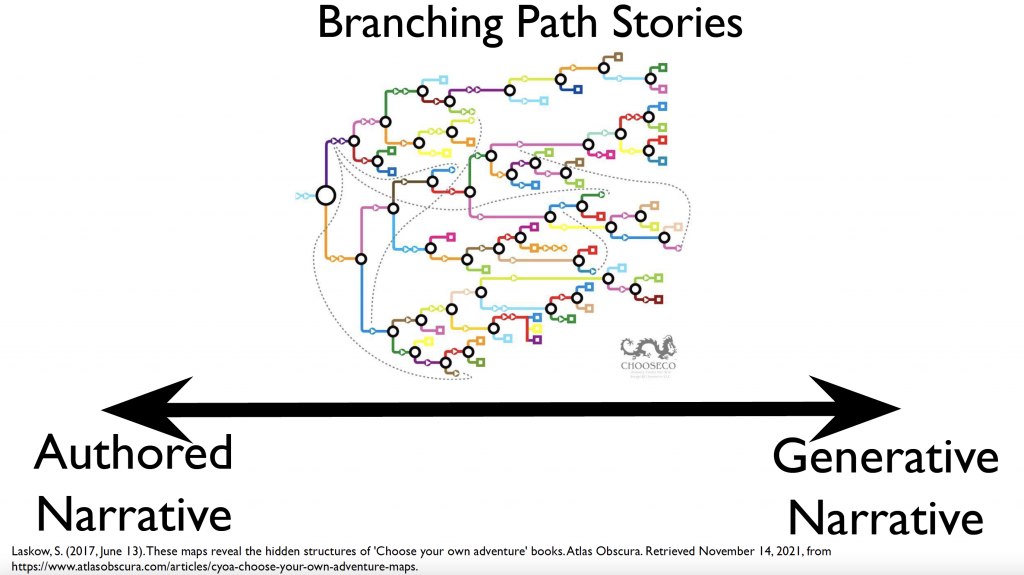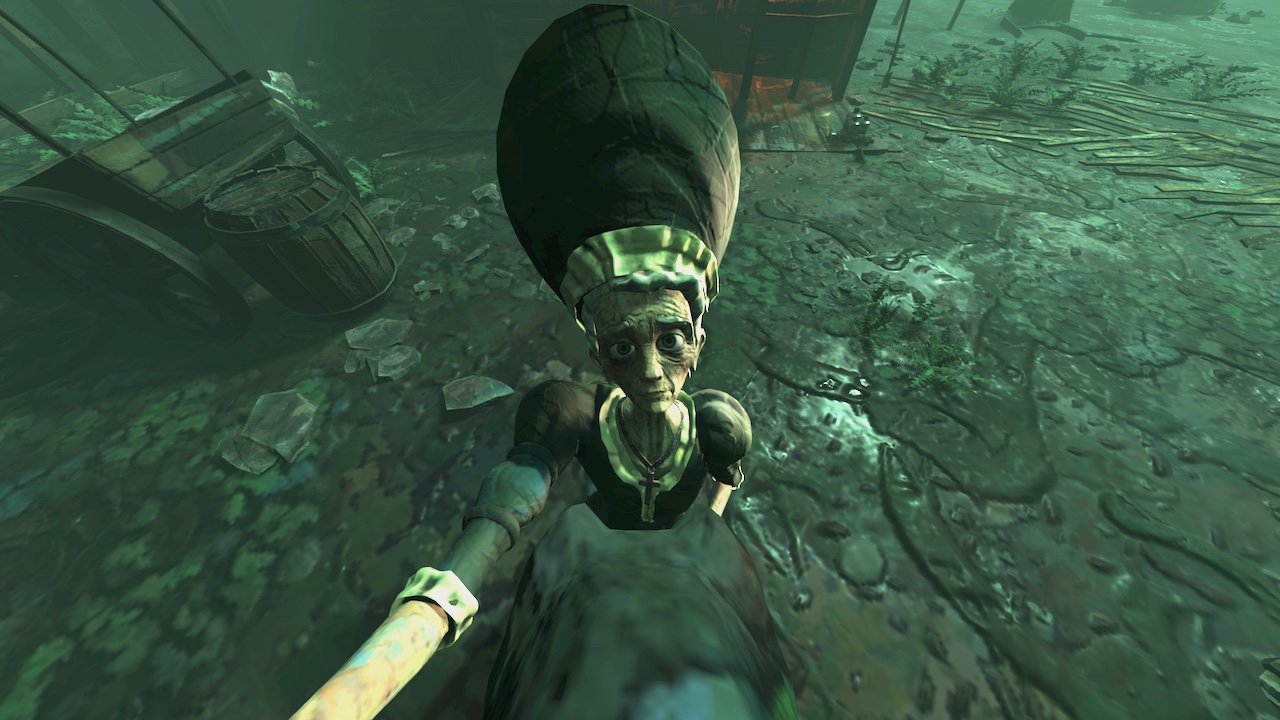- Content Creator At Reality+ Christopher Morrison Discusses Metaverses and New Forms Of Storytelling (Part 1)
- Content Creator At Reality+ Christopher Morrison Discusses Metaverses and New Forms Of Storytelling (Part 2)
Christopher Morrison, chief content creator of Reality+ pushes the boundaries of storytelling across a range of media. “We’ve done everything from theater to circus work to immersive entertainment,” proudly states Morrison. This includes AR, VR, and metaverse activation. (More about these terms later) Additionally, he also works in traditional media such as film and television.
He shares his thoughts on the rapidly changing nature of sort platforms and storytelling where technology meets creativity.
Content is a catch-all phrase describing a narrative product across all media – traditional and non-traditional. The term is informally reserved for material that can be viewed on your cellphone, tablet, or other devices. Morrison isn’t fussed about how the term is used because he believes film and other content are the same thing. “It’s a useful term, especially when you’re moving across platforms, creating 360 degree ancillary material and second screen experiences.”
“In terms of storytelling, content is often maligned as a ‘less-developed’ or ‘less-explored’ form of storytelling as opposed to a TV show,” he cautions. “There are some genius storytellers that operate brilliantly in that constraint. Rather than imposing judgment, it’s more important to say this is the land you need to be on for the type of story you want to tell,” he asserts.
Welcome To The Metaverse
Metaverses are all based on Emergent Gameplay or Emergent Narratives. They all began with a video game base. They have a certain lore and look. “The idea was to create a play space where you do whatever you want in it. The creators respond in real time to what the people were doing in the spaces via chatboxes and other means.” The challenge for screenwriters is to find innovative ways to insert their narratives into that space. They’re organic extensions of gaming platforms such as Roblox, Fortnite and Minecraft.

Christopher Morrison
“A metaverse is defined a realized 3D world that you go into where you inhabit an avatar version of yourself. You’re embodied. You’re clicking through links or you’re watching videos.” Your avatar could be from a third person perspective, like over the shoulder, where you see yourself, or it could be from a first person perspective, where you don’t see yourself unless you have a reflective surface, like a mirror, and you move around that space.
This incudes any indie, AA or AAA video games, particularly open world games which are not open to the public and players have a singular experience. These categories refer to the budgets used to produced them – AAA being the highest.
World of Warcraft, Roblox, and Minecraft allow multiple players to enter the world simultaneously after being invited. Film and television are more an open, communal experience, whereas this is more of a restricted immersive experience. It’s an active experience where players exert a level of control over how narratives play out, while watching a film or TV show is entirely passive. You can react to the story, but you’re not controlling it. “It happens to you.”
“An immersive experience is almost always going to involve some kind of interactivity and choice.” As the platform and the technology driving it improves, the type and level of interactivity is changing. “The audience is encouraged to interact with the actors and tear the set apart and look for stuff, ” explains Morrison.
XR (extended reality) is an umbrella term which lives inside the metaverse and includes AR (augmented reality) mixed reality (MR) and VR (virtual reality). “What you’re going to do is hopefully involve as many senses as possible, whether it’s heightening your vision, such as with a VR helmet to give you a wider view of vision inside the immersive world.” Some VR experiences include touch, scents (lingering) and smell (direct).
Writers looking to break into this space should consider whether their stories are suited to this medium or whether they simply want to explore it because it’s novel. Writers also need to completely redefine their authorial creator roles because they are no longer in total control of what audiences see and experience. “The directorial model of storytelling is dead in this medium because it goes against choice and autonomy. It’s about how much agency you give your players to make choices that affect the story or take it away. You need to establish those rules very early in your experience so that you don’t break trust later.” This is its own specific discipline. The introduction of choice wrecks half of what screenwriting students are taught at film school. Think of it as “choosing your own adventure.”
“You also need to change your mindset from creating pictures or paintings that are composed to creating a spatial environment because there is no longer that clear separation between the screen and the audience as in film or TV.”
“The first thing writers actually have to answer when they’re exploring an XR narrative is whether the audience is embodied or disembodied like a ghost or a fly on the wall? Do you watch things happen or are you an active character in the story.”
Formatting Metaverse Scripts
Unlike film and television scripts which have standardized formats, metaverse script formats are still in a state of flux. Formats depend on the nature of the experience. If writers need a place to start, they can source a 360 degree filmmaking template in Final Draft.
Christopher Morrison uses Excel when he’s writing for video games because he’s tracking branching narratives. “Branching narratives is when you give your audience a choice to split your story.” Excel is useful when you add multiple branches to your story which may or may not return to the main branch.

3 Branching Path Story
There is an open source software for branching, non-linear narratives called Twine which is also becoming popular. Morrison has also used programs like INK by Inkle for branched narratives.
Despite a lack of standardized script structure, metaverse scripts still require a tight, logical and user-friendly format to guide users through their experience. This varies with the components in the story. “We borrow a little bit from our novelistic friends, from prose writing that is a little different from screenwriting,” says Morrison. Excessive scene description and direction is frowned upon in traditional film and television scripts. In contrast, it’s celebrated in metaverse writing because you’re creating entire worlds that users need to visualize. This also holds true for many animation scripts.
The skills developed by comic writers also come in useful. “You need to detail out the world. What are we actually seeing?” You can’t simply assume the reader will understand your visual intention.
“Again, you’ve got to think spatially. What’s happening around the user? Are there other characters there? Where are they standing? Are they in front of you? Are they behind you? Are they to your right or to your left? Are they on the ceiling? Are you halfway buried in the floor?” Accurately defining a user’s perspective, setting, and Point Of View is vital since traditional screenwriters are typically told to focus on time and place to drive the narrative forward.
Morrison also advises that screenwriters abandon the use of the hero’s journey and three act structure often used in Western storytelling. “Start investigating different types of structures that exist in the world.” Metaverse narratives tend to have a more diffuse narrative, or they may not have one at all.
Interactive films are not new. Black Mirror: Bandersnatch has been viewed by millions of people since 2018. “That was nothing but a visual, choose your own adventure narrative. Every choice was binary. Those binary choices immediately led you to the end. You just rewound and did it again. So it can be as simple as that,” adds Morrison. This binary YES/NO branch format is popular in some children’s programming.
